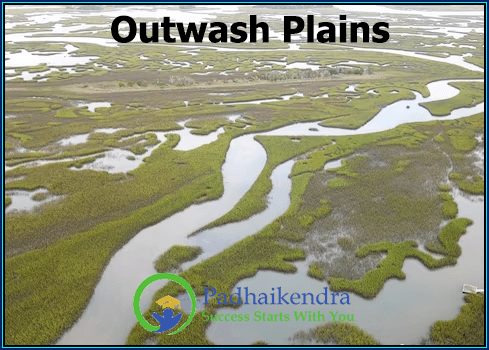An outwash plain is a flat or gently sloping plain of sand and gravel that is formed by meltwater from a glacier. Outwash plains are typically located at the terminus of a glacier, where the ice begins to melt and retreat. The meltwater from the glacier carries sediment with it, which is deposited on the landscape in a fan-shaped pattern.
Outwash plains are characterized by a range of landforms, including braided streams, gravel bars, sandbars, and other features that are associated with glacial meltwater. The sediment that is deposited on the outwash plain is usually well-sorted, meaning that the particles are all similar in size, and it is typically composed of sand, gravel, and other coarse sediment.
One of the key features of outwash plains is their ability to transport and store large amounts of water. The sandy, porous soil of the outwash plain can absorb and store water, making it an important source of groundwater. In addition, the streams and rivers that flow through the outwash plain can provide important habitats for a wide variety of plants and animals.
Outwash plains are found in many parts of the world, including North America, Europe, and Asia. They can vary in size from just a few hectares to thousands of square kilometers, and they can be important sources of sediment for rivers and lakes downstream.
Overall, outwash plains are an important landform that provide insight into the ways in which glaciers and ice sheets can shape the landscape. They are also important habitats for plants and animals, and they can be important sources of groundwater and sediment for rivers and lakes.





